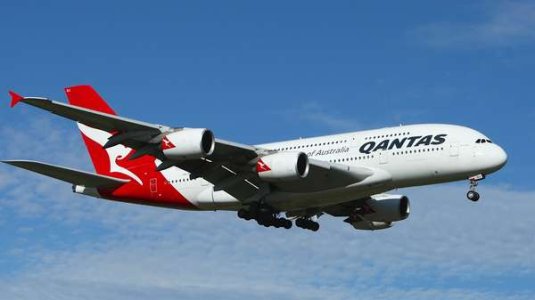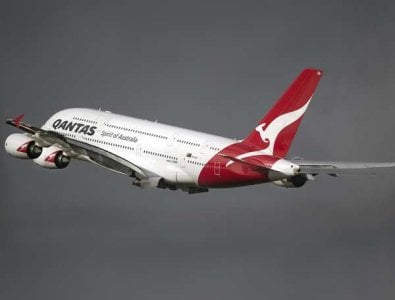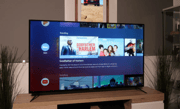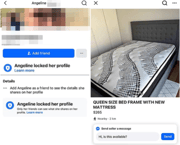Are you ready for a shake-up? Find out the major changes coming to Qantas!
You've likely learned some tricks to make your journeys smoother, such as packing efficiently and using loyalty programs.
However, Qantas has introduced significant changes that you should be aware of.
Before we look into the upcoming changes, let's look at Qantas' current boarding protocol.
In the past, Qantas used a straightforward method of calling passengers, starting from the back and progressing forward in an orderly manner.

However, things have evolved, and boarding has become more complex with multiple tiers.
Currently, Qantas follows a system where premium, first-class, and high-status frequent flyers board the plane first, followed by economy passengers.
This hierarchical boarding approach is a common practice among many airlines.
Here's where Qantas plans to add its twist. They are about to scrap this traditional method which has been the foundation of our boarding process for years.
So what's the uproar, you ask?
The aim is to make the boarding process more efficient and avoid the rush and jostling.
The new system will group passengers based on their seating zones, giving boarding a fresh approach.
Here's how it will work: As usual, business-class passengers will board first. Then, premium economy travellers and high-ranking frequent flyers will follow.
The big change is for the rest of the economy passengers. Your seat number will determine your boarding order.
The purpose is to avoid the notorious aisle traffic jam, which has been a pet peeve since the early days of commercial air travel.
Passengers at the back can now say goodbye to their awkward aisle stand-by pose and look forward to easier access to their seats.
No more struggling for overhead locker space while those at the front settle in with their luxury brand in-flight socks.
Qantas is optimistic that this change will make the boarding process more efficient.
CEO Alan Joyce sees this as a way to 'serve our customers better, reduce our cost base through lower running costs, and carve out some new competitive advantages’.
Whether this new boarding plan will save time and money is yet to be seen, but it will align Qantas with almost every other international airline.
Other airlines use two different methods. One is random boarding, employed by budget airlines like Southwest in the US, where no seats are assigned, and it's on a first-come, first-served basis.

The other method is WILMA, or 'window, middle, aisle'. With WILMA, passengers with window seats board first, followed by those with middle seats and then those with aisle seats.
Testing has shown that random boarding is the fastest method, WILMA is slightly slower, and group zoning is the slowest.
However, passengers are not fond of random boarding, as the TV show Mythbusters discovered.
While they may tolerate it for cheaper fares, the same goes for the WILMA method.
Consequently, Qantas' smart choice of group zoning from back to front seems to be a favourable option for a smoother boarding process.
Qantas is also committed to eliminating lost baggage incidents by introducing bag tracking on its upcoming app. This new app is expected to be available by the end of the year.
Mr Joyce's focus on leveraging new technology to enhance services at Qantas is evident from the airline's profit of nearly $2.5 billion, driven by high fares and booming demand.
However, after 15 demanding years at the helm, he has decided to retire from his position at Qantas in November.
During his tenure as CEO, Qantas faced various challenges, including a significant loss of almost $2 billion, flight cancellations, customer service issues, and legal disputes with laid-off workers.
In the midst of these challenges, there was criticism directed at him for purchasing a $19 million Mosman Bay mansion.
However, he defended his decision, maintaining that his private life should not be a factor in evaluating his role as the CEO of Australia's flag carrier.
He asserted, 'Why is it relevant what I do in my private life? I'm not a public figure. People regard the CEO of Qantas as like a politician, and it definitely shouldn't be. It's a business figure.'

As Alan Joyce packs his bags, he leaves us with a forward-thinking vision for Qantas.
So, the boarding gates have changed, fellow travellers; it's time to embrace the transition with open arms, check our boarding passes twice, and leap into the future of flight!
What are your thoughts on the upcoming changes to Qantas' boarding process? Do you believe the new system based on seating zones will make the boarding process more efficient and alleviate the issues with aisle traffic jams?
However, Qantas has introduced significant changes that you should be aware of.
Before we look into the upcoming changes, let's look at Qantas' current boarding protocol.
In the past, Qantas used a straightforward method of calling passengers, starting from the back and progressing forward in an orderly manner.

Qantas aims to enhance the speed and efficiency of boarding planes by discarding its current method of getting passengers onto flights. Image by Pexels from pixabay
However, things have evolved, and boarding has become more complex with multiple tiers.
Currently, Qantas follows a system where premium, first-class, and high-status frequent flyers board the plane first, followed by economy passengers.
This hierarchical boarding approach is a common practice among many airlines.
Here's where Qantas plans to add its twist. They are about to scrap this traditional method which has been the foundation of our boarding process for years.
So what's the uproar, you ask?
The aim is to make the boarding process more efficient and avoid the rush and jostling.
The new system will group passengers based on their seating zones, giving boarding a fresh approach.
Here's how it will work: As usual, business-class passengers will board first. Then, premium economy travellers and high-ranking frequent flyers will follow.
The big change is for the rest of the economy passengers. Your seat number will determine your boarding order.
The purpose is to avoid the notorious aisle traffic jam, which has been a pet peeve since the early days of commercial air travel.
Passengers at the back can now say goodbye to their awkward aisle stand-by pose and look forward to easier access to their seats.
No more struggling for overhead locker space while those at the front settle in with their luxury brand in-flight socks.
Qantas is optimistic that this change will make the boarding process more efficient.
CEO Alan Joyce sees this as a way to 'serve our customers better, reduce our cost base through lower running costs, and carve out some new competitive advantages’.
Whether this new boarding plan will save time and money is yet to be seen, but it will align Qantas with almost every other international airline.
Other airlines use two different methods. One is random boarding, employed by budget airlines like Southwest in the US, where no seats are assigned, and it's on a first-come, first-served basis.

Despite the boarding changes Qantas is implementing, economy passengers will continue to board last. Image by bilaleldaou from pixabay
The other method is WILMA, or 'window, middle, aisle'. With WILMA, passengers with window seats board first, followed by those with middle seats and then those with aisle seats.
Testing has shown that random boarding is the fastest method, WILMA is slightly slower, and group zoning is the slowest.
However, passengers are not fond of random boarding, as the TV show Mythbusters discovered.
While they may tolerate it for cheaper fares, the same goes for the WILMA method.
Consequently, Qantas' smart choice of group zoning from back to front seems to be a favourable option for a smoother boarding process.
Qantas is also committed to eliminating lost baggage incidents by introducing bag tracking on its upcoming app. This new app is expected to be available by the end of the year.
Mr Joyce's focus on leveraging new technology to enhance services at Qantas is evident from the airline's profit of nearly $2.5 billion, driven by high fares and booming demand.
However, after 15 demanding years at the helm, he has decided to retire from his position at Qantas in November.
During his tenure as CEO, Qantas faced various challenges, including a significant loss of almost $2 billion, flight cancellations, customer service issues, and legal disputes with laid-off workers.
In the midst of these challenges, there was criticism directed at him for purchasing a $19 million Mosman Bay mansion.
However, he defended his decision, maintaining that his private life should not be a factor in evaluating his role as the CEO of Australia's flag carrier.
He asserted, 'Why is it relevant what I do in my private life? I'm not a public figure. People regard the CEO of Qantas as like a politician, and it definitely shouldn't be. It's a business figure.'
Key Takeaways
- Qantas is changing its boarding system to make it more efficient, moving away from a class-based approach to one based on seating zones.
- The airline aims to reduce lost baggage issues by introducing bag tracking on its new app.
- Outgoing CEO Alan Joyce has defended his record following criticism of his personal spending amid the company's financial issues.
- Joyce is leaving Qantas in November after serving the airline for 15 years.
As Alan Joyce packs his bags, he leaves us with a forward-thinking vision for Qantas.
So, the boarding gates have changed, fellow travellers; it's time to embrace the transition with open arms, check our boarding passes twice, and leap into the future of flight!
What are your thoughts on the upcoming changes to Qantas' boarding process? Do you believe the new system based on seating zones will make the boarding process more efficient and alleviate the issues with aisle traffic jams?







